
Nutrient-rich chickpeas, also known as garbanzo beans, are a low-fat source of high-quality protein. One cup of chickpeas contains about 15g of protein and more than 12g of fiber. They are also a source of vitamin B-6, folate, zinc, vitamin C and other antioxidants. Although canned chickpeas from the supermarket are ready to use, home-cooked chickpeas are thrifty and easy to prepare, and they'll give your hummus a rich, nutty flavor. Freshly cooked, dried chickpeas have a different texture than the canned variety, ensuring that your hummus will be velvety smooth. Add flavor to your hummus by experimenting with dry seasoning mixes, like spicy ranch. Look for bagged, dried chickpeas alongside other dried legumes in the supermarket, or check in the bulk aisle.
Preparation
Sort through the dried chickpeas and wash them in cold water. Use a colander to speed up this simple task. Soak chickpeas overnight in the refrigerator to prepare them for cooking. For each cup of dried chickpeas, dissolve about 1 tsp. of baking soda in 1 qt. of cold water in a large bowl or pan and add the rinsed chickpeas. The next day, rinse the chickpeas in a colander under cold running water before you cook them.
Stovetop Method
The cooking method for chickpeas is basic: boil them in water until they are done. Use an oversized pan so you'll have room to stir the chickpeas as they cook. Cover the soaked chickpeas with 1 quart of water with a 1/2 tsp. of baking soda. Baking soda creates an alkaline solution, which softens the proteins in the chickpeas so they can absorb more water, shortening the cooking time and making cooked chickpeas creamier when you puree them. Bring the open pan to a boil, then reduce the heat to a simmer and cover the pan with a lid. Stir the chickpeas occasionally. Foam forms on the water as they cook; spoon it off if you wish.
Check for Doneness
Although chickpeas increase in size as they cook, you won't be able to tell if they are done just by looking at them. When they have simmered for about 45 minutes, remove two or three from the pan and cut them in half. Fully-cooked chickpeas are soft and creamy yellow all the way through. If they are not done, you will see a white, starchy area in the center of the cut chickpea. Let them simmer for a few more minutes, and keep checking until they are done.
Pressure Cooker Method
If time is short, cook chickpeas in about 25 minutes using a pressure cooker. Simply sort and rinse the dried chickpeas and place them in the bottom of the pressure cooker with water. You don't need to soak the chickpeas if you use a pressure cooker. Follow the pressure cooker manufacturer's instructions for the correct pressure and cooking time for your model.
Slow Cooker Method
For no-fuss cooking, a 2 1/2-quart slow cooker works nicely. Sort and rinse 1 lb. of chickpeas, cover them with 7 cups of water with 1/4 tsp. of baking soda, and cook them on high for about four hours, or on low for about eight hours. The slow cooker method does not require overnight soaking.
Related Articles
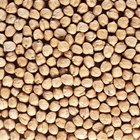
How to Cook With Chickpeas

How to Cook Dried Chickpeas Without a ...
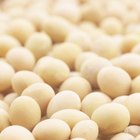
How to Rehydrate Chickpeas

How to Soften Lentils
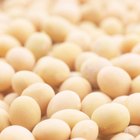
How to Cook Raw Chickpeas or Garbanzo ...
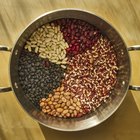
How to Cook Perfect White & Pinto Beans
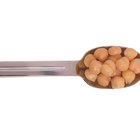
How to Cook Dry Garbanzos in a Crock Pot
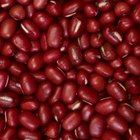
How to Soak Adzuki Beans

What if You Don't Cook Chickpeas Long ...

How to Cook Udon
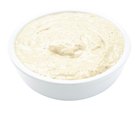
How to Make Homemade Creamy Hummus Dip ...
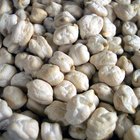
How to Freeze Garbanzo Beans
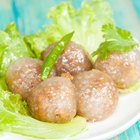
How to Cook Tapioca Balls
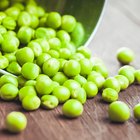
How to Fry Peas
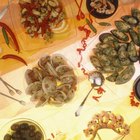
How to Clean Soft-Shell Clams (Steamers)
How to Make Lentils Into a Meat ...

How to Cook Escargot in the Shell

Can You Use Vegetable Oil Instead of ...
Best Crock-Pot Pinto Beans Recipe

How to Stretch Out Sweatpants
References
Writer Bio
Fern Fischer's print and online work has appeared in publications such as Midwest Gardening, Dolls, Workbasket, Quilts for Today and Cooking Fresh. With a broader focus on organic gardening, health, rural lifestyle, home and family articles, she specializes in topics involving antique and modern quilting, sewing and needlework techniques.
Photo Credits
Hemera Technologies/AbleStock.com/Getty Images